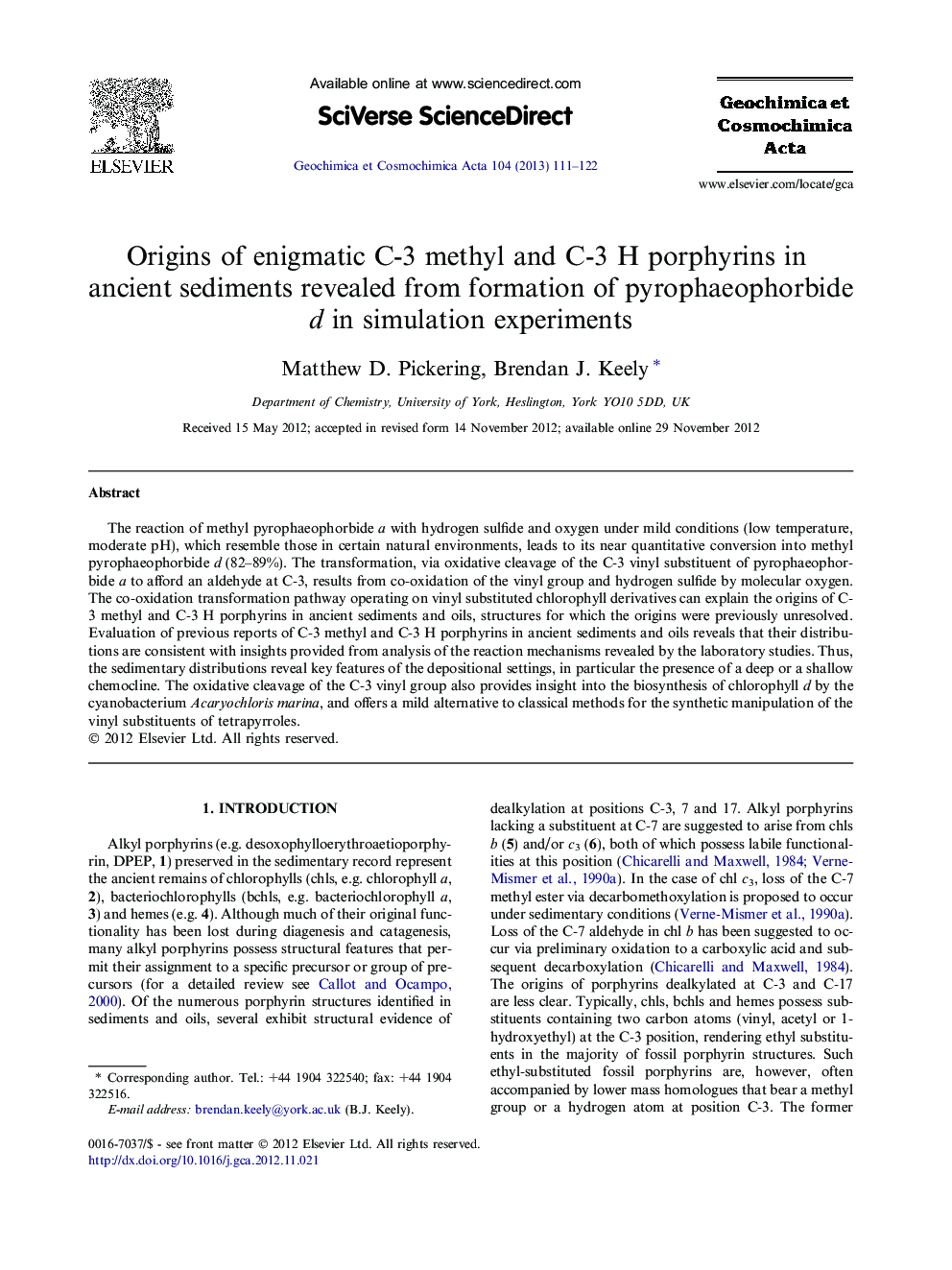| Article ID | Journal | Published Year | Pages | File Type |
|---|---|---|---|---|
| 4702593 | Geochimica et Cosmochimica Acta | 2013 | 12 Pages |
Abstract
The reaction of methyl pyrophaeophorbide a with hydrogen sulfide and oxygen under mild conditions (low temperature, moderate pH), which resemble those in certain natural environments, leads to its near quantitative conversion into methyl pyrophaeophorbide d (82-89%). The transformation, via oxidative cleavage of the C-3 vinyl substituent of pyrophaeophorbide a to afford an aldehyde at C-3, results from co-oxidation of the vinyl group and hydrogen sulfide by molecular oxygen. The co-oxidation transformation pathway operating on vinyl substituted chlorophyll derivatives can explain the origins of C-3 methyl and C-3 H porphyrins in ancient sediments and oils, structures for which the origins were previously unresolved. Evaluation of previous reports of C-3 methyl and C-3 H porphyrins in ancient sediments and oils reveals that their distributions are consistent with insights provided from analysis of the reaction mechanisms revealed by the laboratory studies. Thus, the sedimentary distributions reveal key features of the depositional settings, in particular the presence of a deep or a shallow chemocline. The oxidative cleavage of the C-3 vinyl group also provides insight into the biosynthesis of chlorophyll d by the cyanobacterium Acaryochloris marina, and offers a mild alternative to classical methods for the synthetic manipulation of the vinyl substituents of tetrapyrroles.
Related Topics
Physical Sciences and Engineering
Earth and Planetary Sciences
Geochemistry and Petrology
Authors
Matthew D. Pickering, Brendan J. Keely,
